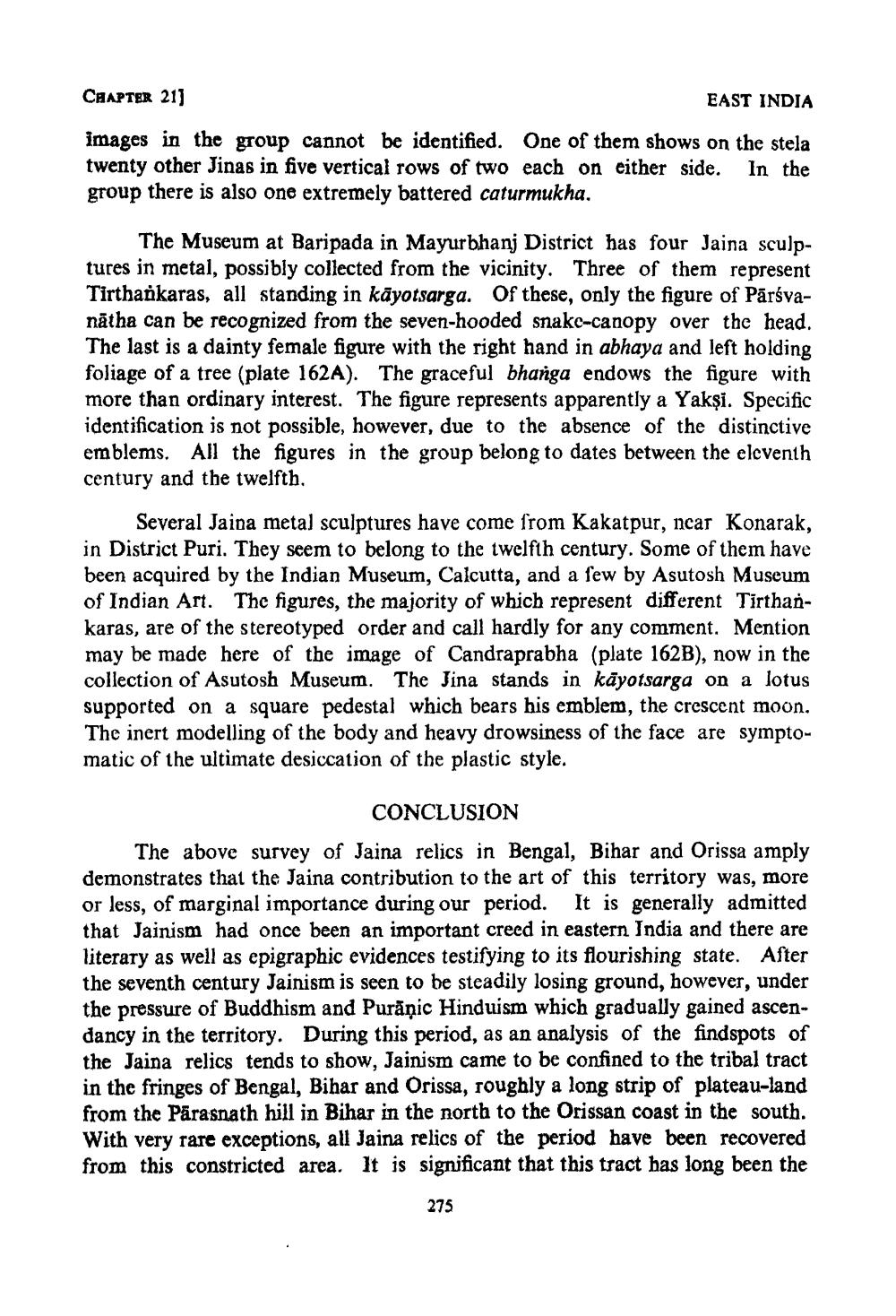________________
CHAPTER 21]
EAST INDIA
images in the group cannot be identified. One of them shows on the stela twenty other Jinas in five vertical rows of two each on either side. In the group there is also one extremely battered caturmukha.
The Museum at Baripada in Mayurbhanj District has four Jaina sculptures in metal, possibly collected from the vicinity. Three of them represent Tirthankaras, all standing in kāyotsarga. Of these, only the figure of Pārsvanātha can be recognized from the seven-hooded snakc-canopy over the head. The last is a dainty female figure with the right hand in abhaya and left holding foliage of a tree (plate 162A). The graceful bhanga endows the figure with more than ordinary interest. The figure represents apparently a Yakşi. Specific identification is not possible, however, due to the absence of the distinctive emblems. All the figures in the group belong to dates between the eleventh century and the twelfth.
Several Jaina metal sculptures have come from Kakatpur, ncar Konarak, in District Puri. They seem to belong to the twelfth century. Some of them have been acquired by the Indian Museum, Calcutta, and a few by Asutosh Museum of Indian Art. The figures, the majority of which represent different Tirthankaras, are of the stereotyped order and call hardly for any comment. Mention may be made here of the image of Candraprabha (plate 162B), now in the collection of Asutosh Museum. The Jina stands in kāyotsarga on a lotus supported on a square pedestal which bears his emblem, the crescent moon. The inert modelling of the body and heavy drowsiness of the face are symptomatic of the ultimate desiccation of the plastic style.
CONCLUSION The above survey of Jaina relics in Bengal, Bihar and Orissa amply demonstrates that the Jaina contribution to the art of this territory was, more or less, of marginal importance during our period. It is generally admitted that Jainism had once been an important creed in eastern India and there are literary as well as epigraphic evidences testifying to its flourishing state. After the seventh century Jainism is seen to be steadily losing ground, however the pressure of Buddhism and Purānic Hinduism which gradually gained ascendancy in the territory. During this period, as an analysis of the findspots of the Jaina relics tends to show, Jainism came to be confined to the tribal tract in the fringes of Bengal, Bihar and Orissa, roughly a long strip of plateau-land from the Pārasnath hill in Bihar in the north to the Orissan coast in the south With very rare exceptions, all Jaina relics of the period have been recovered from this constricted area. It is significant that this tract has long been the
275




